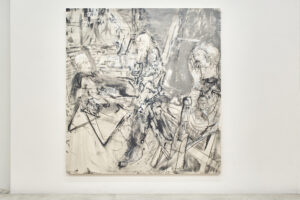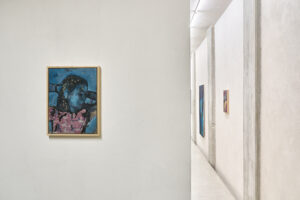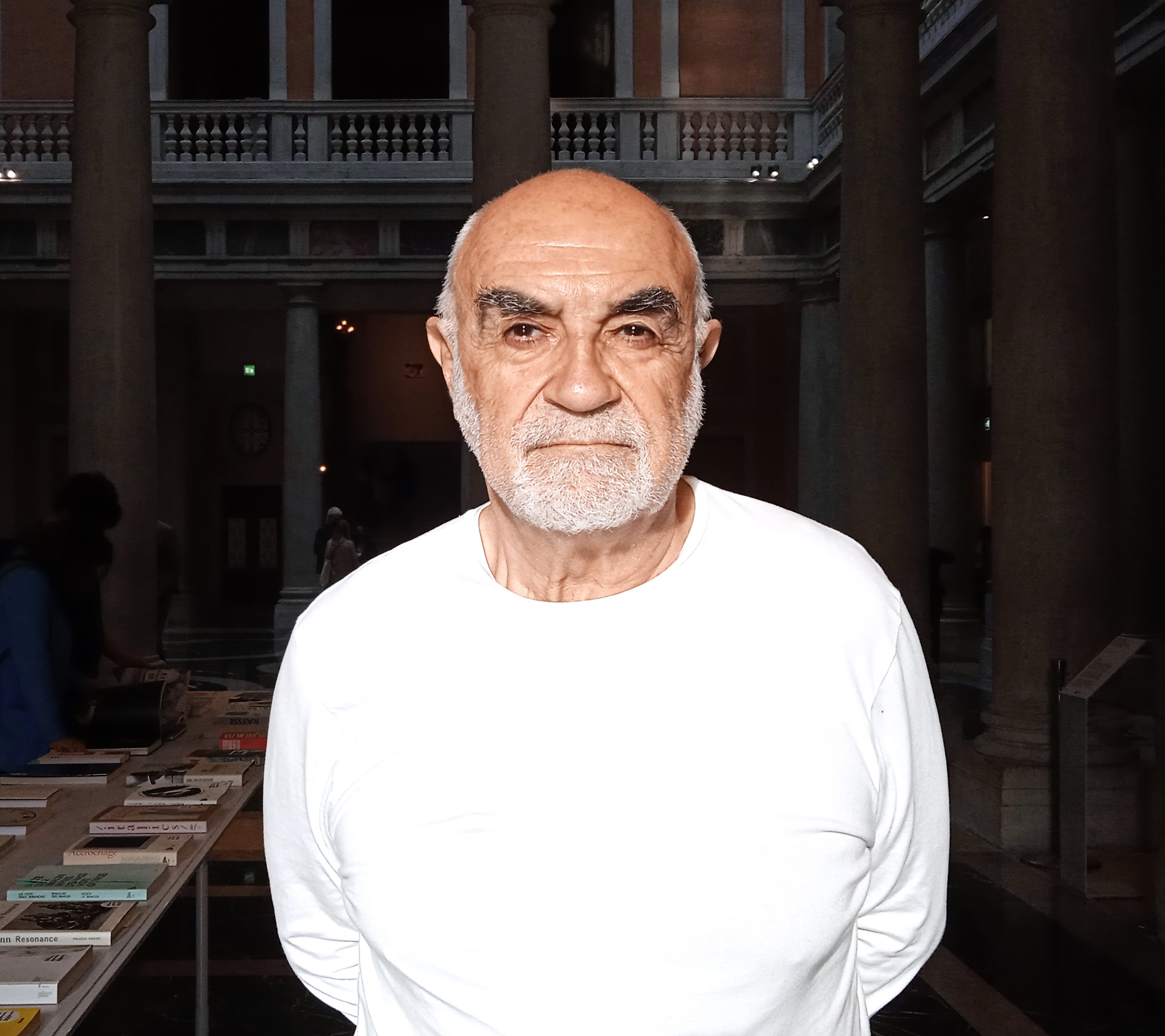In the psychoanalytic reworking of dreams, what the analysand really remembers is less important than what he is able to tell about it. It is there, in the filtering carried out by the language, speaking with an available interlocutor (the analyst) that the peremptory or elusive images glimpsed while sleeping can acquire meaning. Or, more precisely, a sense useful for tracing the unconscious mechanisms from which the same images have emerged to the point of remaining etched in the memory.

Nebojša Despotović, Another Race of Vibrations, installation view at CAR DRDE, courtesy the artist and CAR DRDE, Bologna
What does all this have to do with the seven paintings by Serbian artist Nevosa Despotović (Belgrade, 1982) exhibited by CAR DRDE in the exhibition Another Race of Vibrations? In this title there is a symptom that points towards an answer: distant, different vibrations (from another race, in fact) compared to those consciously perceived. The series is presented as a recording on canvas and other matter of traces left by everyday images of women and men (friends, colleagues and artists) close to the author and bound to him by understandings so pregnant as to be at the same time at the limit of the indescribable. Here is where we find, if not the heart, an important source of the “vibrations” captured and translated into images by Despotović’s paintings.

Nebojša Despotović, Another Race of Vibrations, installation view at CAR DRDE, courtesy the artist and CAR DRDE, Bologna
The artist, who graduated in painting from the Academy of Fine Arts in Venice, currently lives and works between Treviso and the lagoon city. After various experiences, including international ones, at CAE DRDE gallery he offers a selection of paintings where the brushstrokes, so dense and full of disparate suggestions that they almost risk chaos, evoke an idea, often vague and almost indecipherable, of dreamlike presences, immersed in an aura between the disturbing and the confidential. Bluish, grey, brown, pink (always interspersed with almost occasional interventions of another shade) often dominate the scene.

Nebojša Despotović, Bach, 2022, acrylic,gesso, ink and characoal on canvas, 215 x 200 cm, courtesy the artist and CAR DRDE, Bologna
But this artist’s tools aren’t limited to just paints and brushes. His paintings are troubled by other materials that make the already complex representation offered multi-layered, such as paper sheets glued to the canvas and then torn and scraped as if they were further glazes of color, or wood which from a pictorial support becomes an almost sculptural element, when it is nicked and engraved to allude with its natural color exposed to the “highlights”.

Nebojša Despotović, Another Race of Vibrations, installation view at CAR DRDE, courtesy the artist and CAR DRDE, Bologna
As Andrea Busto[1] writes, for Nevosa Despotović «painting is also a practice, it is gymnastics and a physical exercise, which one performs in front of the emptiness of the virgin canvas on which the images created by the color gradually emerge and from the composition. The artist belongs to a generation that, without problems, unites and combines the great masterpieces of art history with anonymous Instagram images. The citation technique is not present in his work, that of appropriation is. […] He mentally immerses himself in the story painted on the canvas, to then become estranged from it and, taking a step back, to reassume the role of creator and therefore director of the scene. The theatre, the painting, the person, the characters, the director and the actors, the roles and life, whether true or false, live in a mental and real ballet that expresses itself beyond the canvas/curtain/backdrop, beyond the studio of the artist, but also everything inside his mind».

Nebojša Despotović, Mia, 2022, oil on engraved wood, 50 x 40 cm, courtesy the artist and CAR DRDE, Bologna
In the exhibition therefore we see portraits of individuals or couples, the titles of which (such as Nic in Borca, Nic and Anna in Borca, Manu and Keta, Mia) in their direct simplicity suggest an intense empathy between the author and his subjects, suggesting that it is precisely this, rather than the reminiscence of their physical appearance, that guides his stylistic, chromatic and formal choices. In particular, in this roundup of faces and bodies left at different stages of definition, Mia’s face stands out, and in her joyful but enigmatic pose it seems to come out of the vibrations left by a dream, perhaps of love.
[1] in the catalog of the exhibition Nebojša Despotović – The Golden Harp curated by him in 2020 at MEF – Museo Ettore Fico, Turin
Info:
Nebojša Despotović. Another Race of Vibrations
21.01.2023 – 04.03.2023
CAR DRDE

Valerio Romitelli (born in Bologna in 1948) taught, researched and lectured in Italy and abroad. His disciplines: History of political doctrines, History of political movements and parties, Methodology of the social sciences. Among his latest publications: L’amore della politica (2014), La felicità dei partigiani e la nostra (2017), L’enigma dell’Ottobre ‘17 (2017), L’emancipazione a venire. Dopo la fine della storia (2022).






NO COMMENT